Student Blog
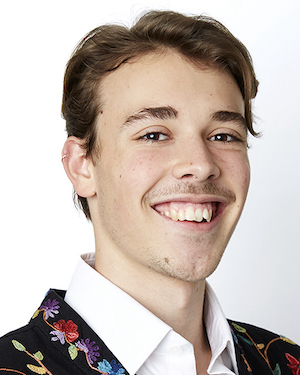
Welcome to the Trojan Family! But first, maybe Trojan Friendship? ⟩
February 28, 2022, by Seth
I have, once again, been thinking about the future and as we all prepare to transition into new chapters, my mind keeps coming back to one part of the experience: making friends.
Much like everything else in life, graduate school is a rollercoaster of experience! There are peaks and valleys, and while you’re slowly ticking your way to the top or racing down the hill, it can be hard to remember there are other people on the ride too. It can be a lonely experience, after all. You may be moving across the country, your friends may now be employed full-time, and said plainly adult relationships can be hard! I have been a graduate student for two years now and I still feel these things sometimes. I’m sure these feelings will continue as I move into my next chapter too, but there are ways that we can put ourselves out there and meet other people! I’ve compiled a list of strategies that I have been tinkering with lately and I hope that in advance of your transition, whatever and wherever it may be, something sticks. The one thing they do have in common, however, is putting yourself out there. The frameworks in place are just that, foundations, and it is up to you to build them up!
Schedule and Protect Your Time
I want to start off with some sage advice my lifestyle redesign course received from Dr. Camille Dieterle this semester. She encouraged us to look at our calendars and see when we were having fun versus our responsibilities. It is so obvious that you never think twice about it before someone points it out. Suddenly, it was like a lightbulb had turned on, “Of course I’m lonely! I go to class, I go to work, I go to sleep and repeat.” Where in that mix am I living my twenties? You may be tempted to acknowledge this and commit to making a change, but you must remember that whatever you schedule for you, make sure to protect it! If you’re going to a museum on Friday, don’t agree to a meeting at that same time. I am two weeks out from living this advice and I have already done more things with my friends within that time than I have all last semester.
Take Advantage of the Structures in Place
This suggestion covers a lot of ground. This could mean joining the social media groups for your academic class, a club meeting, a post-final get-together, or it could be a university-wide event; the campus is your oyster! All of these avenues contain a safety net if you’re finding yourself flying solo. What I mean by this is if you are nervous about showing up alone or you’re more of a wallflower, you’ll always have something to start a conversation about: USC! We often laugh at orientation-style ice breakers, but they exist for a reason. My advice is to start with a compliment (“I love your overalls”), introduce yourself (“I’m Seth, it’s nice to meet you!”), and roll right into the “What’s your major?” conversation (“I’m studying occupational therapy, let me explain what that means . . .” (IYKYK). Did I use this exact conversation just this weekend? Yes. Did I walk away with four new friend phone numbers? Yes! All I have to say is if it ain’t broke, don’t fix it!
Find Your People
I’m not just talking about those with similar hobbies or people you just *vibe* with; I’m talking about dropping your hairpins and stopping the code-switching, I’m talking about finding your People with a capital “P”. I highly encourage you to seek out your cultural student organizations and your communities beyond the campus boundaries. Find the people who lift the weight of your shoulders and nourish your soul in a way that only people who get it, and get you can. They’re out there, I promise!
Keep Your Roots
It may go without saying, but I think it is important to reiterate. You still have all of the friendships you had before graduate school! They may look a little different, but that doesn’t mean they are gone. Don’t be afraid to schedule a weekly check-in phone call or a tri-monthly zoom call (and make sure to protect it!). Keep sending each other those memes, let them crash on your couch when they’re in town, and visit them when you go home. Whatever your transition may bring, know that you’ll still have someone to turn to and that you’ll navigate it together.
After all of these tips I do want to add a caveat: I’m not saying you have to make the bestest of friends. Graduate school may feel long in the moment, but it goes by in the blink of an eye. Do not feel pressured to walk away from the experience with the friendship equivalent of a soulmate (If you do, I love that for you). What I am saying, though, is that it helps to have a shoulder to lean on and someone to celebrate with. It helps to have a friend, no adjective is needed. With that said, to those entering the E-OTD next year, to our incoming BS-OTD students, and to anyone who is going through a transition soon, welcome to the Trojan Friendship and thank you for being a friend.
⋯

You’re Welcome ⟩
February 26, 2022, by Silvia
Admissions Diversity First-Gen
I say that in the most humble way.
Here’s the thing about being first-gen — or maybe just about me — we’ve been conditioned to feel and express nothing but thankfulness when we’re given anything (an opportunity, admissions acceptance, a scholarship, etc.), rather than saying what we truly know.
“That’s right, I EARNED that, and I DESERVE it. You didn’t just HAND it to me . . . and if we’re being honest, you kinda need me.” Try saying that with your chest next time . . . maybe after you say thank you — but you get what I mean.
As I write this blog, I find myself deleting and rephrasing because I think to myself, “other college students feel that way too,” and that’s the problem. We minimize and sometimes dismiss our feelings trying to be considerate of others. All the typical college student feelz are valid, I am not trying to take that away. What I am saying is that they are compounded by being first-gen — that’s the power of intersectionality.
I don’t just exist as a student. I exist as the first-born and female daughter of Mexican parents — parents who brought me with them when they immigrated so that I could be “first-generation,” though I don’t think that’s what they intended. Mi mamá me dice, “Yo nunca imaginé que ibas a llegar hasta aquí,” and it’s not because she didn’t believe in me, she believes in me more than I believe in myself, it’s because we come from having nothing and knowing nothing. This matters because while many of my peers were enrolled in extracurriculars, sports, being tutored, etc., in the years preceding college applications, I was cleaning houses with my mom. The moment I learned to write and speak English, which was in 3rd grade, I was making my mom’s business cards on a 3x5 piece of paper and answering the phone when people called to inquire about her services. I cleaned houses with my mom from elementary to high school, up until I left for college.
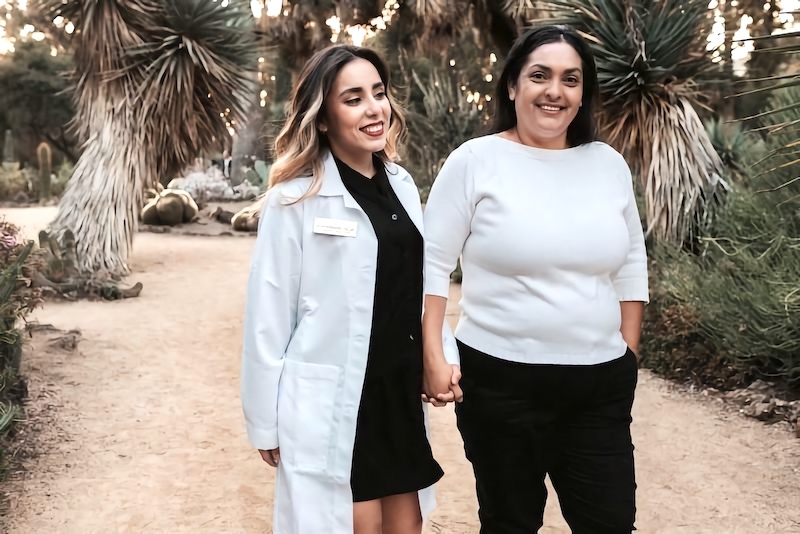
My mother’s daughter, a proud moment.
I, like many of my fellow Latinx and first-gen brothers and sisters, had romanticized going to college and couldn’t wait to experience it. The truth is, experiencing college as a first-gen student is rewarding, but it’s even more exhausting. There’s pride and there’s guilt. We’re not just navigating academics and figuring out financial aid, we’re also simultaneously carrying out roles as our families’ primary interpreters, therapists, mediators, advocates, coparents (IYKYK) and so much more. There’s pride in knowing my siblings get to wear sweaters with the names of universities they actually know about and have visited. The pride in knowing that when teachers ask if said university is where they plan to attend, they get to say, “No. My sister went there for undergrad. She’s at USC getting her master’s now,” is one of the many things being first-gen is all about. That, and the guilt that comes with it as we realize that this is only possible because our parents sacrificed their own dreams for ours.
I believe this is where the internalized superlative feelings of thankfulness stem from. Looking back to where we started, we can’t help but feel thankful for where we are now. But we’re not here because we paid our way in. I will always be thankful for every opportunity I have been given, but I will also acknowledge that it’s not a favor that is being done. Just as I remind myself that I worked for this, and I deserve it, I hope you do too.
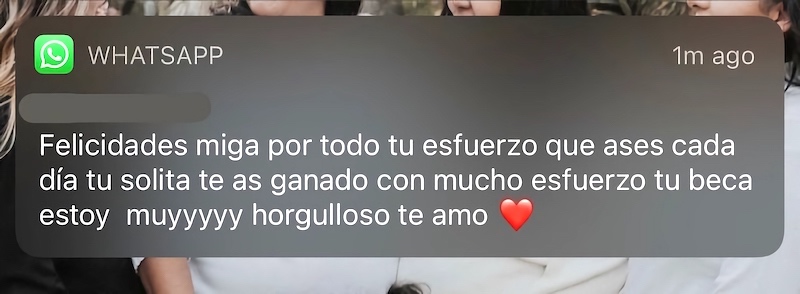
A reminder from my dad: “Congratulations mija for all of the hard work you put in each day. You, by yourself, with all of your effort have won your scholarship. I am very proud. I love you.”
So, to our alma matters (and future ones too, including USC), you’re welcome for choosing you. You’re welcome for our diversity, authenticity, and everything we have brought to the table.
—
I want to leave you with something that I was told and that I hold onto as I reflect on my journey through higher education: “You had nothing, but at the same time you had it all.” — Dr. Rafeedie
⋯
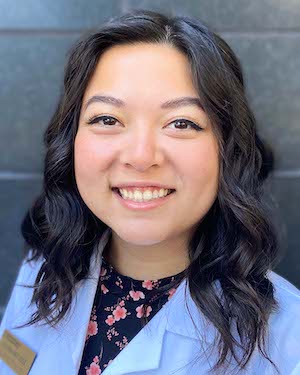
Why the OTD is Right for Me ⟩
February 18, 2022, by Alyssa
Hello! At the time I’m posting this, many of you are likely hearing back from OT schools and deciding where you want to go. If so, congratulations! And welcome to the best career ever.
In the spirit of USC Chan admitting its first-ever class to the new entry-level OTD program, I wanted to share more about why I’m choosing to stay to get my OTD here even though I’m part of the entry-level MA program.
USC was the only entry-level MA program I applied to - the rest were all entry-OTD. Given that I already had a master’s, I figured the next obvious step was to pursue a doctorate, and I didn’t think through the distinction more than that. So when I accepted my offer at USC, I had practically already decided that it was going to be a 3-year commitment.
Now that I am at the end of the MA program here, I’ve done more reflecting on what the OTD means to me and why I think it’s important for my career –
1. Mentorship
My biggest draw to pursuing my OTD is an additional year of mentorship in a clinical setting. Sure, by the end of this year I will have technically completed all of the requirements to start practicing, but I think that the unique structure of an OTD compared to a first year on the job provides more opportunity for guidance and relationship building with your supervisor.
2. Leadership
The OTD also aligns with my interests in leadership roles within the profession. A guest speaker in class mentioned that sometimes a doctorate is required to have a seat at the metaphorical and/or physical decision-making table in some organizations, and I want to be there.
3. Timing
I feel lucky to be able to continue on to getting my OTD now rather than returning after a few years of work. Right now, my role as a student defines many aspects of my life, and I am feeling progressively more ready to close this chapter. Of course I’ll still be learning every day at work from my future colleagues and clients, but I don’t think starting work then returning for another degree would have worked for me.
As a bonus, staying for the OTD means spending another year in close connection with the wonderful friends and professors I’ve built relationships with here in LA 😊
⋯
Celebrating Lunar New Year 2022! ⟩
February 15, 2022, by Global Initiatives Team
By Yiyang (Sunny) Fang, PhD student, OTD alumni, Bachelor’s to Master’s alumni
Editors Alison Chang and Vanessa ElShamy
Entry-Level Professional Master’s students
Having lived in the United States for 6 consecutive years since graduating from undergraduate school, celebrating the Lunar New Year in Los Angeles has been a big part of my life! Despite ongoing concerns around the COVID-19 pandemic, I was able to safely gather with my partner and several other friends at home to celebrate the holiday. We went to the local Chinese grocery store, 99 Ranch, and enjoyed home-made HOT POT! Hot pot is one of the most popular meals to have on New Year’s Eve because family members and friends get to gather around the circular boiling pot, cook, and share food as a group. Some of my favorite ingredients to cook in a hot pot include beef and lamb slices, meatballs, fish cakes, spam, rice cakes, potatoes, and a variety of leafy green vegetables. While gathering around the hot pot, we also watched the Chinese New Year Gala (春晚, pronounced as “Chun Wan” in Chinese), a special variety show for New Year’s Eve featuring singing, dancing, magic shows, and drama performances. For many Chinese families, watching the New Year Gala at the New Year’s Eve has become a beloved ritual.
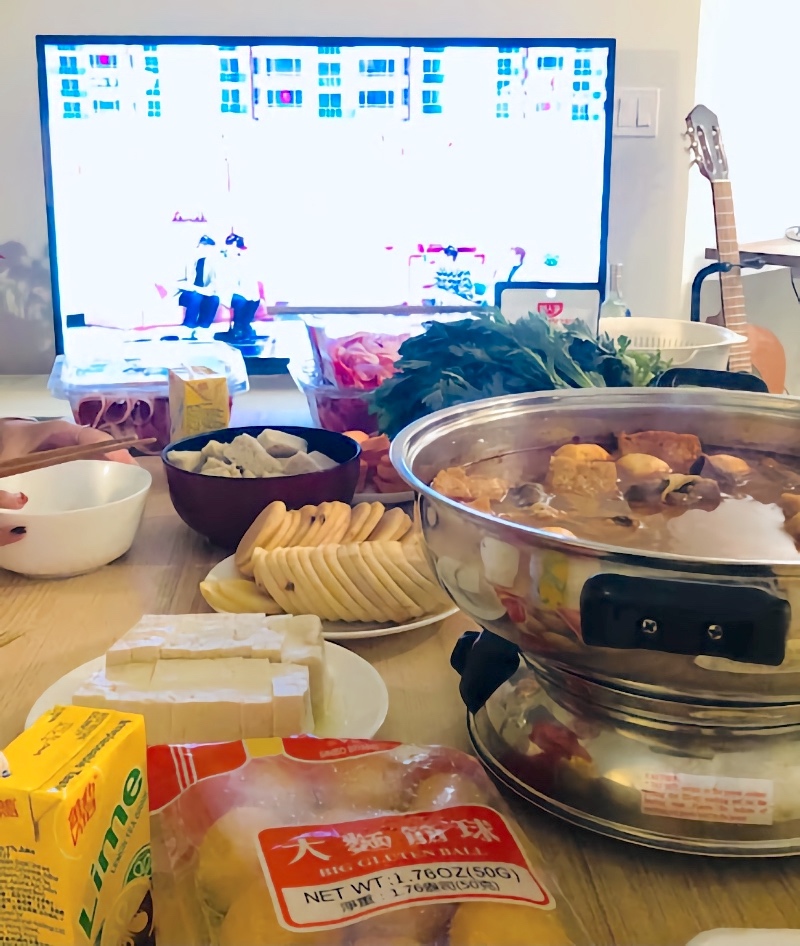
Celebrating Lunar New Year 2022 with home-made hot pot and Chinese New Year’s Gala.
To welcome the year of the Tiger, which is the 3rd of the 12 Chinese Zodiac animals (生肖 , pronounced as “Sheng Xiao”), I added decorations to both the front and back of the doors throughout my apartment. The mandarin orange plushies that I hang at the front of my door symbolize luck and fortune. The Spring Couplets on the back of my door mean “good luck everyday” and “happy everyday.” Having these decorations at home has been a tradition for not only myself, but also my family back in China. The red ornaments create a warm and festive vibe for the important holiday and hold our most genuine wish: that the new year will be a good and prosperous one. I am grateful that I was able to celebrate the Lunar New Year with my friends here in LA in a very meaningful way. I hope that the year of 2022 will bring everyone more happiness, blessings, and good health!!!

Lunar New Year decorations on the backside of the door — spring festival couplets.

Lunar New Year decorations at the front of the door — mandarin orange plushies.
⋯
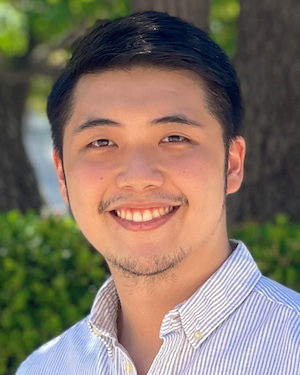
Taking That Leap of Faith ⟩
February 11, 2022, by Marvyn
Admissions International Life Hacks Living in LA
This time last year, I took a leap of faith. I was contemplating for such a long time if I were to apply for the Post-Professional Master’s program or not. It took me a couple of factors before I could hit the submit button. Allow me to elaborate.
A Master’s program is so daunting! Can I even do it??
If you have read my previous blog about my undergrad experience, I am not a perfect student. If anything, I’m faaaar from being perfect. Not that imperfection is unacceptable, but taking a program that is a Master’s level is A BIG DEAL. It’s a huge step further than a bachelor’s degree. My mind, when I was thinking about applying, was spinning in circles. I was asking over and over “Do you think you can handle the challenges?” “Are you capable to take on this huge step in your life??” AND A BUNCH MORE.
What helped me go through it is to reflect on my “WHY”. I knew that I wanted to learn more about occupational therapy, most specifically at the best university for the program. So, instead of thinking of the intimidation of a big dream like this coming to a reality, I focused on the goal. Eyes on the prize. I wanted to become more than what I am now, and that I am willing to go through all hoops and hurdles to get there. So ultimately, learning how “to let go and to believe in myself” is the best way to go. Trust me, you CAN do it.
What would my family and peers think of me just abandoning them for so long??
It varies from person to person, right? It’s true, I am privileged to say that my family is my best support system ever. Even though I knew that this is a very big dream for me to achieve, I am lucky enough to have a family that supports me in any of my dreams. The same can be said about my friends too! As much as I thought they would be disappointed in me, they all ended up being my biggest cheerleaders.
Believing in yourself is one thing but having someone else believe in you too helps a lot. Trust me when I say that support system doesn’t have to be high maintenance. You can have relationships in life that can propel you to do great things without holding you back. Stick with them and you’ll feel confident in taking such a huge endeavor such as this.
I’ve never lived outside my home country for this long, HOW CAN I SURVIVE?!
Living in a foreign country for a long period of time really is a game of survival. There’s really no way to sugarcoat it. But, I will let you in on a not-so-secret secret: It’s definitely do-able. I have had many anxiety-driven nights back at home thinking about things to prepare, anticipate, and worry about living in LA for so long. But once you find out where you will be staying and mapping out notable places to do essential stuff, you are pretty much set! If there’s any advice I can give you on this problem, it’s that: Once you set your feet on the ground, find as many people as possible, especially in the Chan community. You’ll find quickly that there are a bunch of people who can help you survive the LA grind. I mean, look at the last blog I wrote about things to do in LA! I wouldn’t have been able to do all that had I not have the friends I newly found throughout this journey!
Circling back, I definitely think these factors have been major themes that worry me before I hit the SUBMIT button in my application. But like I said, I took that leap of faith. I closed my eyes, took a deep breath, whispered a little prayer, and let my finger go heavy on my laptop’s trackpad. I feel the vibration on my finger signifying a click and the rest is history!
At the end of all this, I’m so glad I took that leap. I cannot express how thankful I am to myself for grasping the courage and going for it. It really takes some nerve to be able to trust the process and let Destiny do their work. It’s only a matter of time.
If you’re still contemplating or having any questions with your application process, you can always contact me (and my other co-ambassadors) at .(JavaScript must be enabled to view this email address).
⋯





